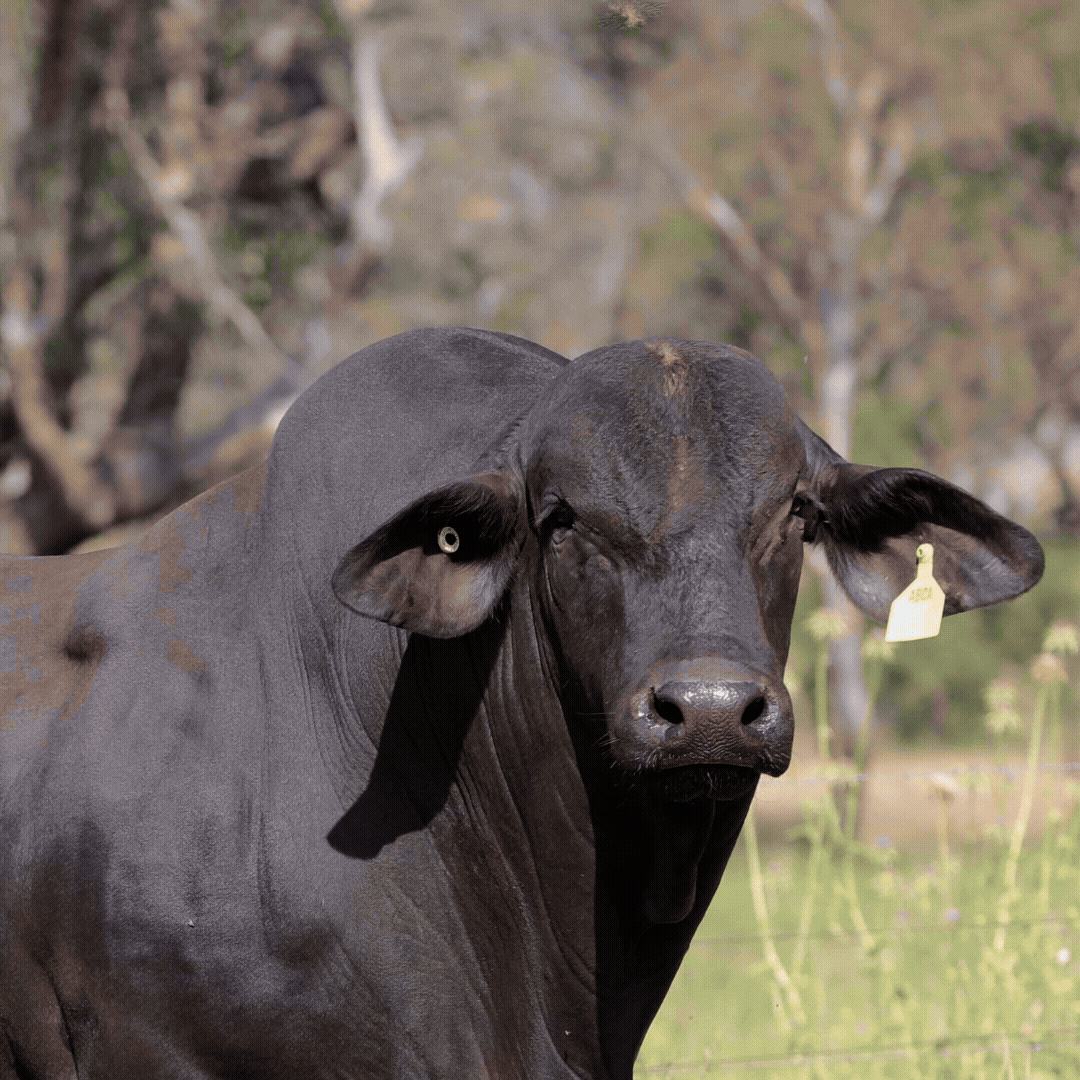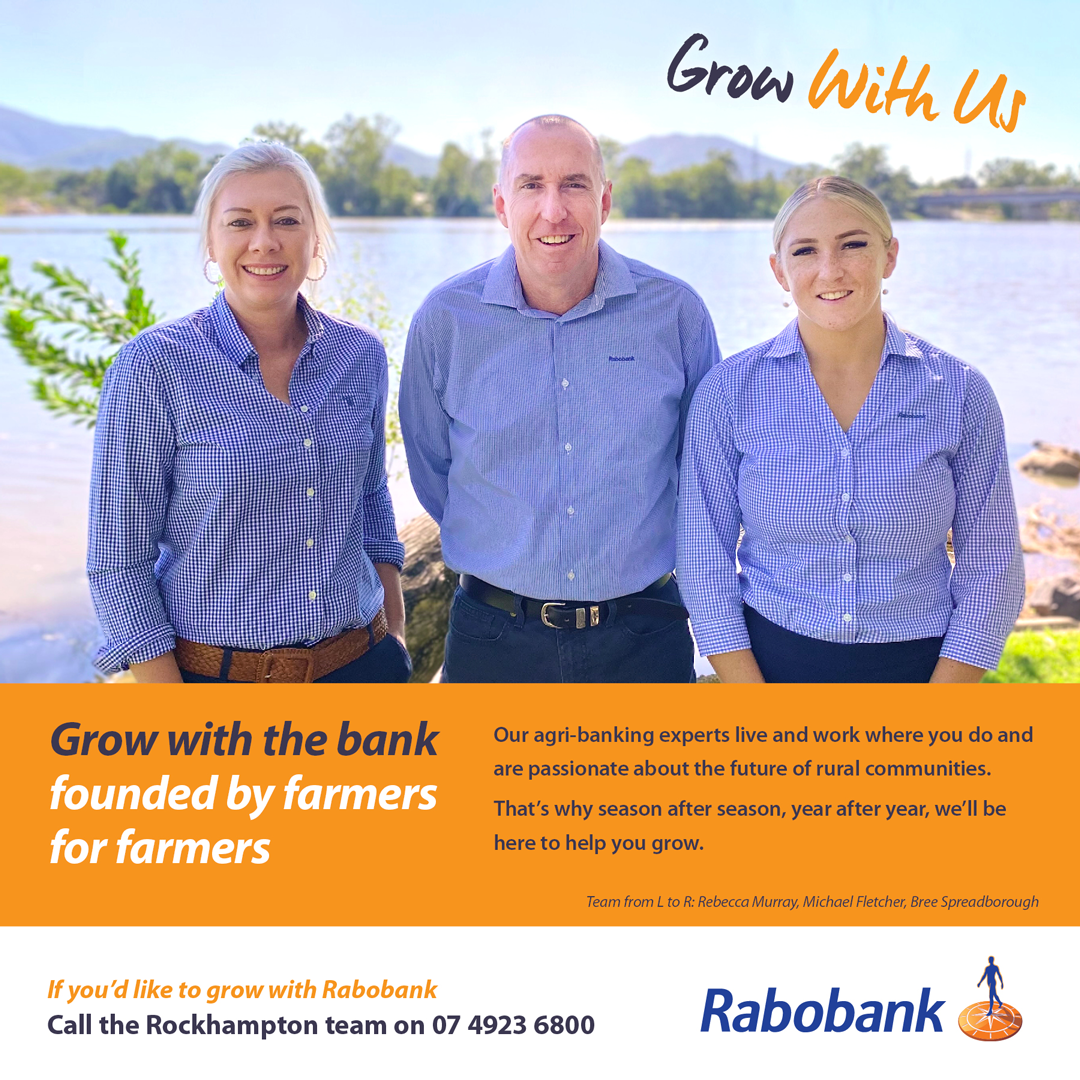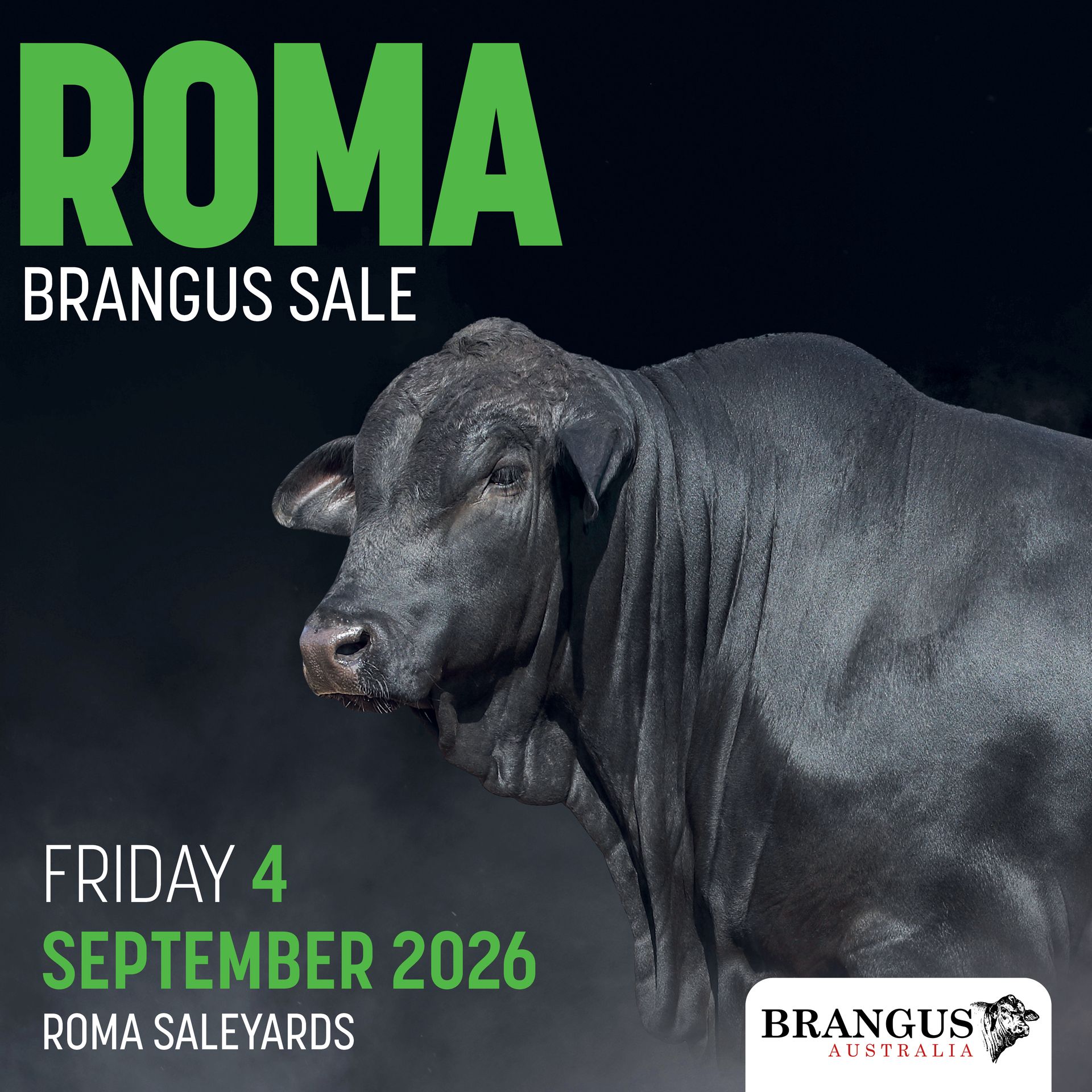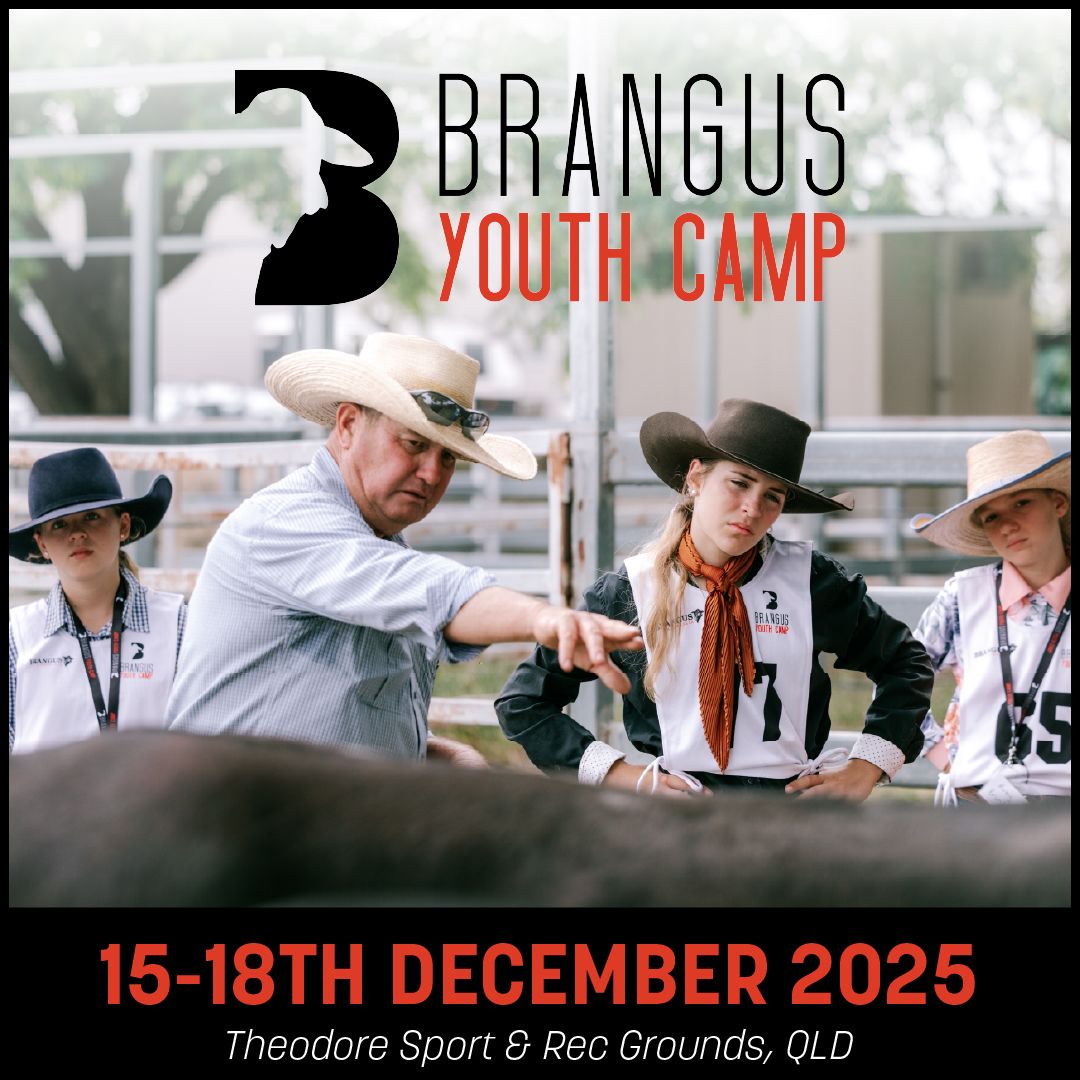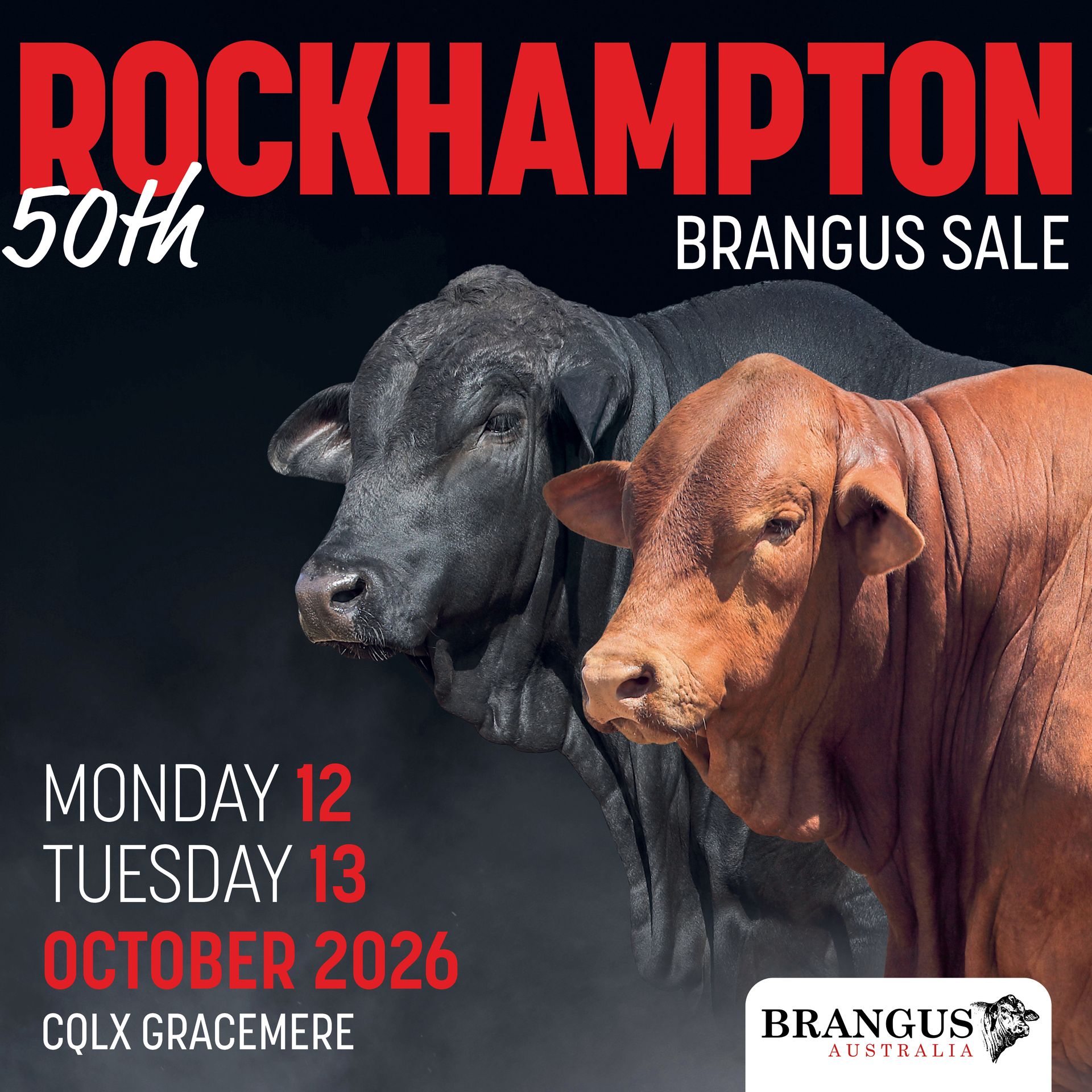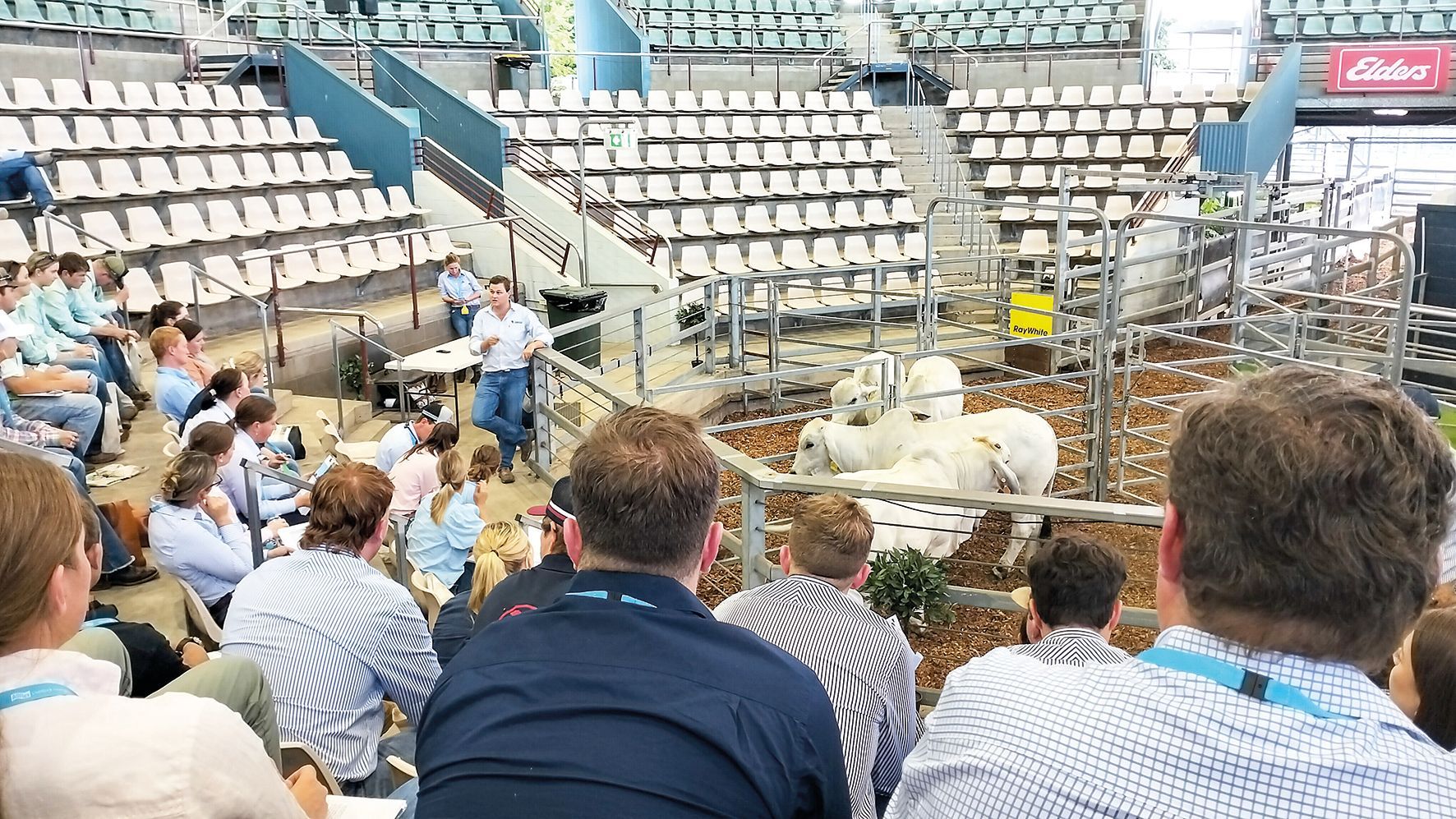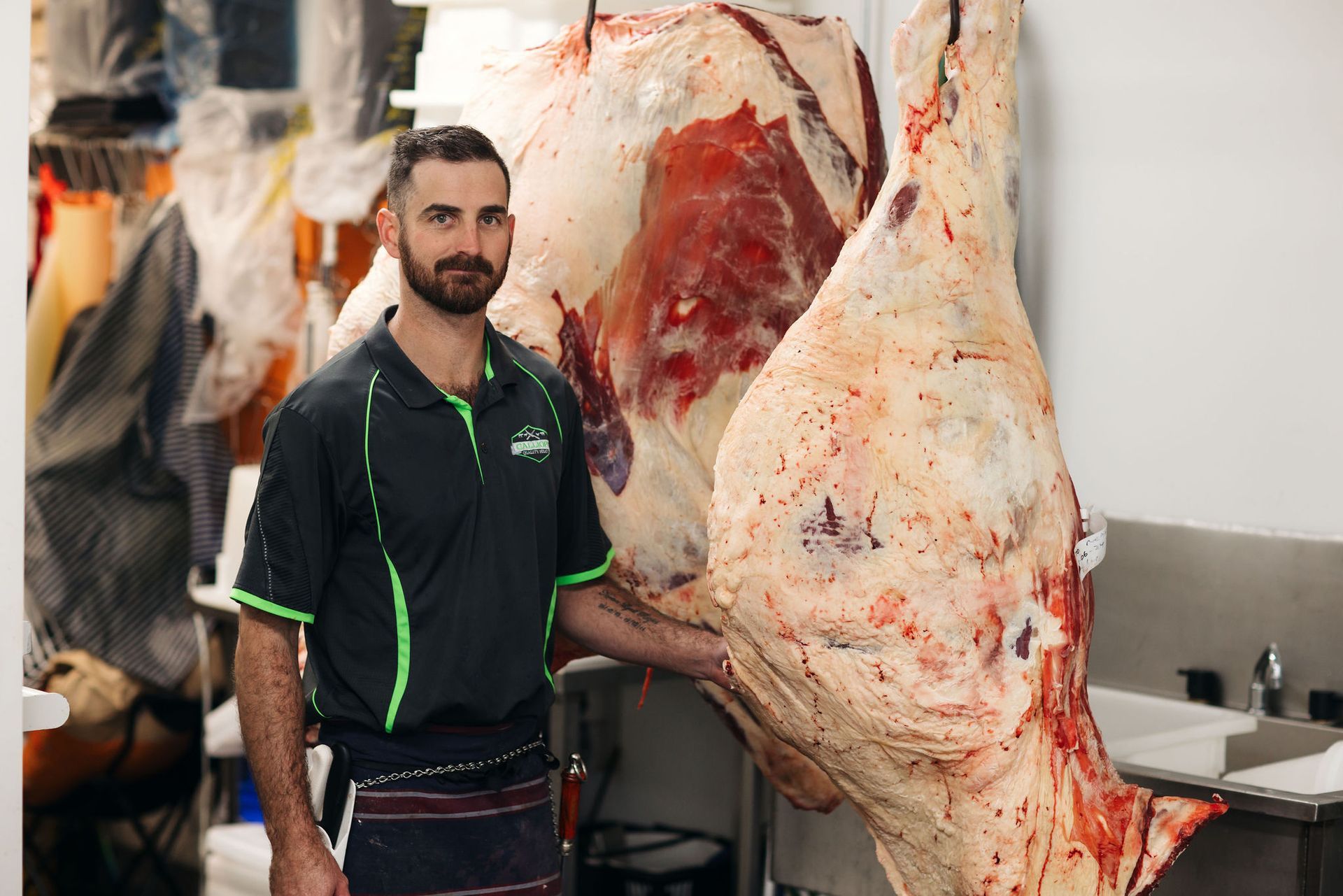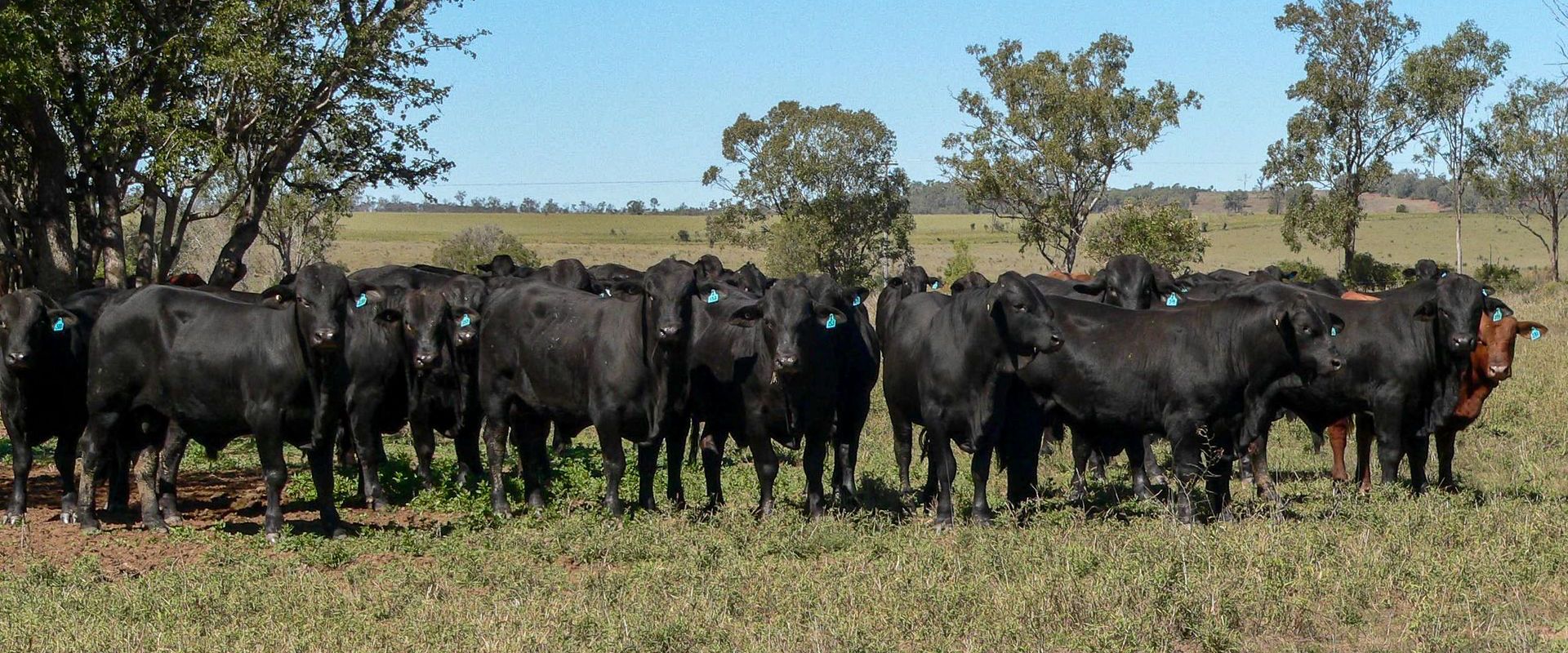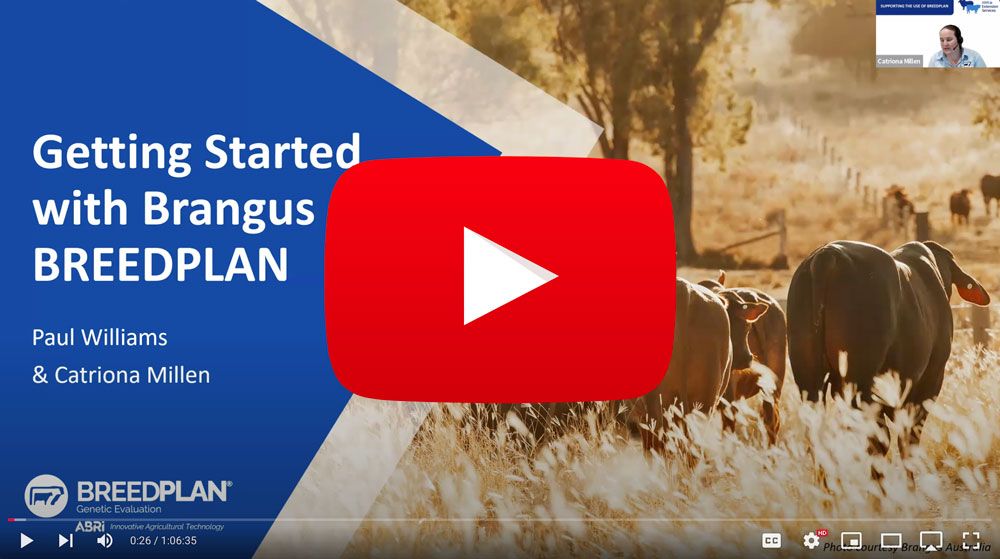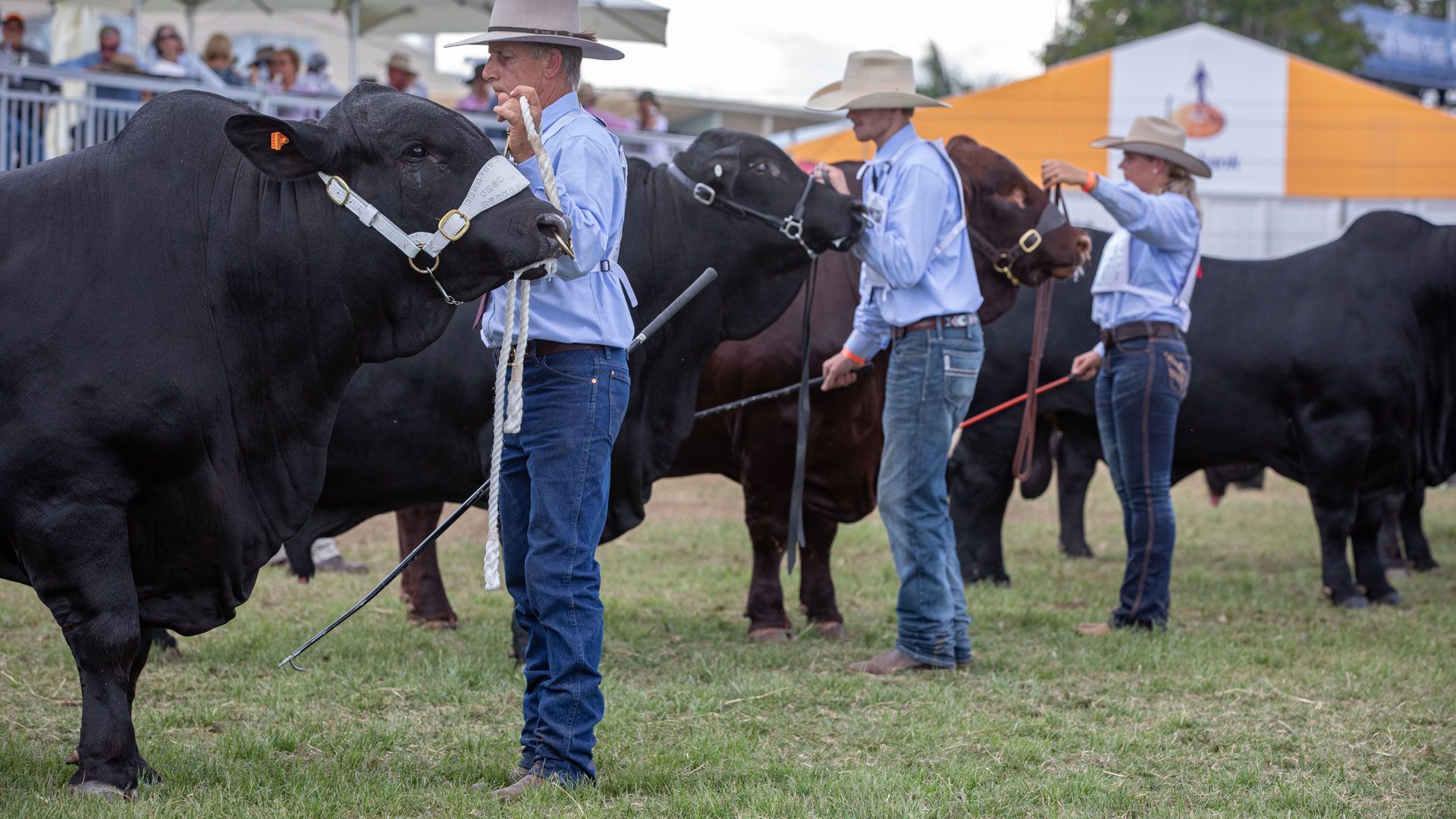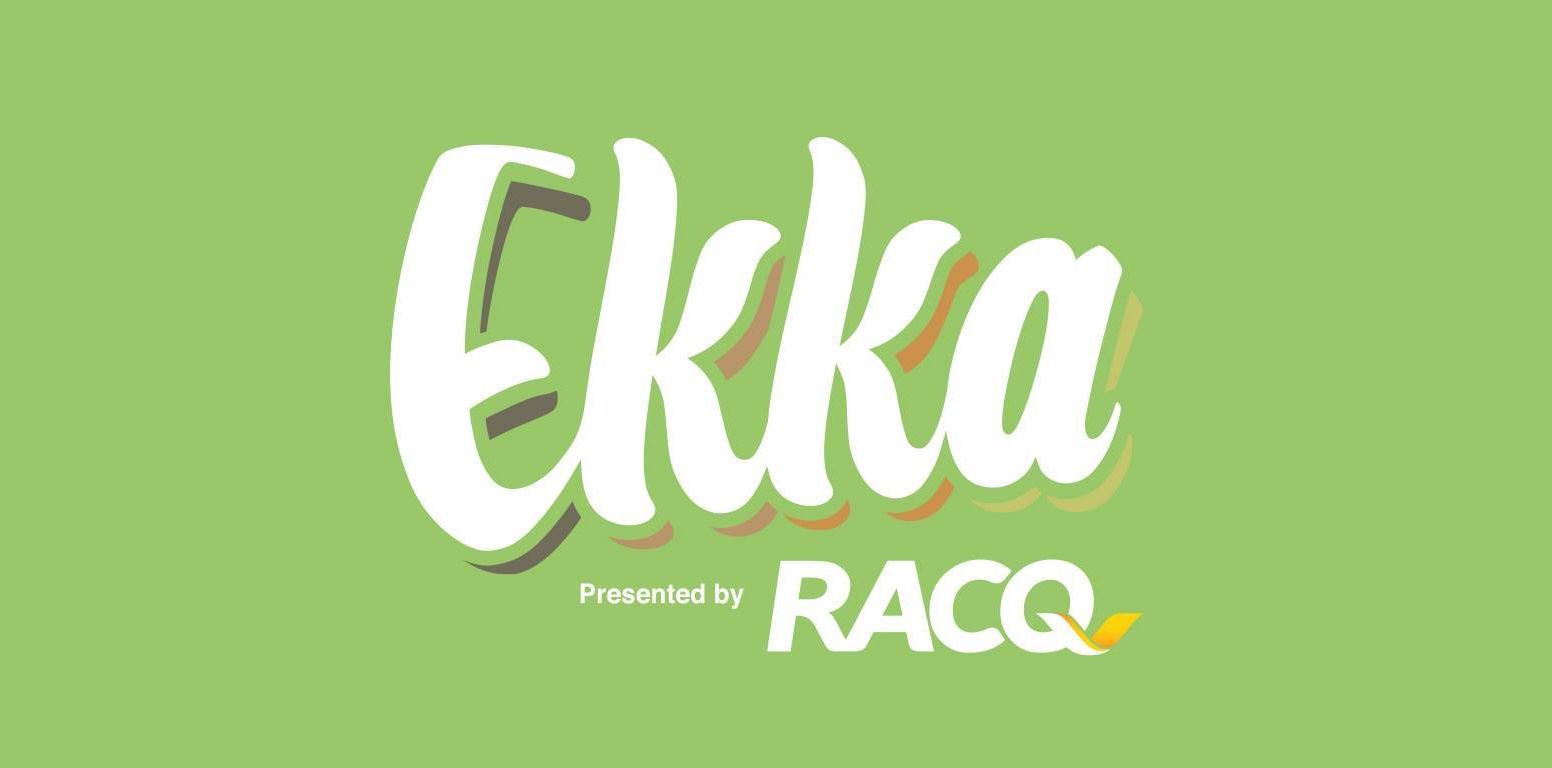A GROWING LOVE FOR BRANGUS
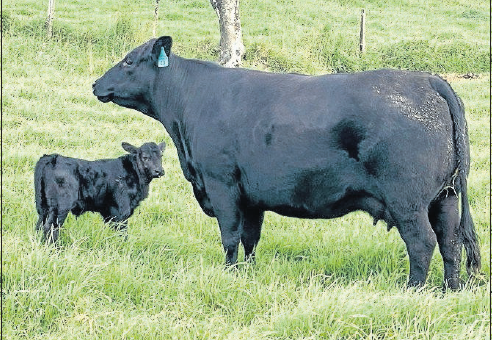
Bill and Suzanne Pickersgill use Brangus cattle as part of a strategic breeding mix aimed at several markets. Brangus cattle are a growing part of their pastoral business in Central Queensland.
The Pickersgills own three properties. Redfern, is 1376ha of rainforest country growing improved pastures including humidicola, signal and pangola grasses. Redfern is north of Mackay, with a reliable 1422 mm rainfall. The property is home to a herd of close to 540 breeders.
Weaner cattle are moved from Redfern to Geneva, 4856 ha of mostly buffalo grass and softwood scrub, sown with dianthus and panic. This property is in southeast Queensland, at Theodore, and hosts 400 breeders, steers and bullocks year-round.
"We raise the weaners to two-to-three-year-old fat bullocks, with a carcase weight of 300 to 330kg. Grown heifers are turned off at 280kg carcase weight," Mrs Pickersgill said.
The Redfern and Geneva properties are European Union accredited and Geneva is certified organic.
Mr and Mrs Pickersgill grow dryland forage crops in summer and oats in winter at Geneva, when rainfall permits.
"We harvest the forage crop for hay, and our steers, bullocks and fattening heifers graze the forage and oats."
The Pickersgills also lease a block at Kilcoy, where they are working towards gaining EU-accreditation status. At
Kilcoy they run 450 female cattle, including breeders producing progeny for the same fattening EU market as their other properties. All heifers are grown out at Kilcoy.
"We move them here, where they're weaned and joined. We usually join heifers at 18-20-months-old. We've found they readily get back in calf each year when we first join the mat that age."
Horses are used for mustering the cattle at each property, and helicopters and quad bikes are added to the mix at Geneva.
Their organic-accredited cattle are sold direct to Arcadian Meat Company, and the remaining bullocks and cull cows and heifers are sold to Teys Meatworks at Biloela, Teys Australia at Beenleigh and Thomas Borthwick and Sons - NH Foods at Mackay.
The couple run a number of breeds of cattle, depending on locality, with a team of bulls purchased for each property.
"We have Brangus, Charbray, Simbrah, and Brahman cattle, and we're moving towards breeding more Brangus at Mackay because of the ticks, flies and higher rainfall.
"Brangus are a good middle- of-the-road beef breed and you can get the weight on them. We think they'll be a more resilient breed for that country."
They're also increasing the number of Brangus and Brahman cows they run at Geneva.
"Those particular cows will suit Geneva because Brahman and Brangus cattle naturally have shorter hair and tick resistance."
The thinking behind their goal to replace a lot of the herd with Brangus cattle includes animal and people welfare, as well as increasing the amount of muscle the finished animal lays down.
"We're moving towards breeding more polled cattle. We think that's important going forward. People talk about how you've got to breed back into horned cattle every few years to retain bone and mass. Generation- bred Brangus cattle are
generally pretty good about retaining bone and muscle, in the same way that you expect from horned breeds."
This year is their first year with progeny on the ground after purchasing two Brangus bulls bred by Brett and Mandie Scott of Millstream Springs Cattle Co.
"Millstream Springs Cattle Co breed big robust bulls, with nice smooth coats, agility, quietness, and with plenty of meat on them."
"Night Ranger was used as a yearling bull and his first calves have just started hitting the ground this year. We bought Def Leopard to join to second-calf Brangus and Simbrah heifers, and we look forward to seeing his calves, which will hit the ground in late August."
Traditionally, the joining window has been October to February, but they are working towards shortening that, in line with their management of herd fertility. Currently, fertility is 95 to 100 per cent across the entire herd, after two rounds of bulls during the joining period and at a joining rate of one to 30.
"We're going to try and shorten the joining window to take the bulls out by the end of January next year. We're getting up to 100 per cent fertility with the cows that are grazing on the buffalo country at home."
"We expect pregnancy testing will pick up any cows that miss joining. We only keep the heifers out of the breeders that join, and the shy cows - who don't get in calf - get culled."
"We semen test, vibrio and lepto-test all the bulls each year, and we try not to overwork young bulls - they go out for six to eight weeks in their first year so they don't work so hard."
Heifers are retained to maintain herd numbers and cows - so long as they calve every year - are kept until they are 13-years-old.
Article courtesy of the Queensland Country Life




